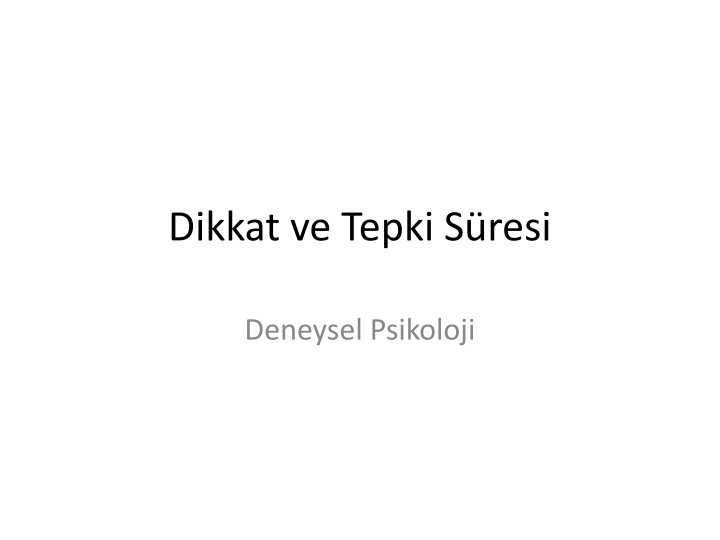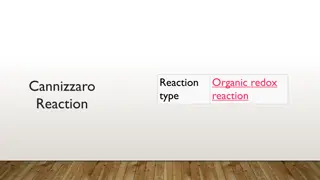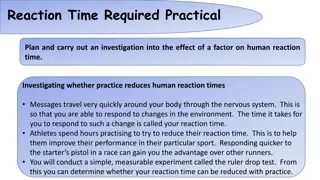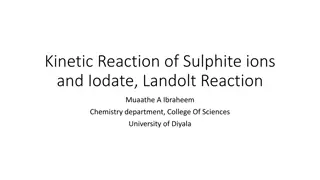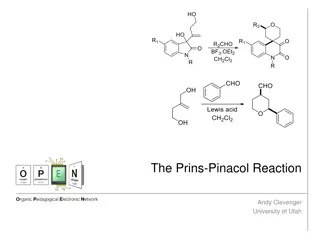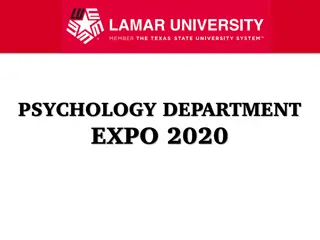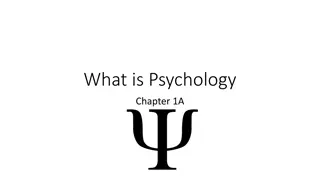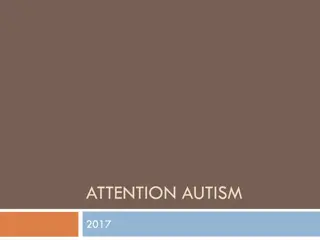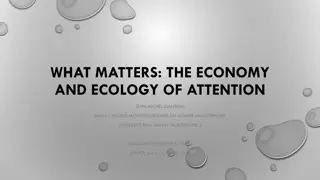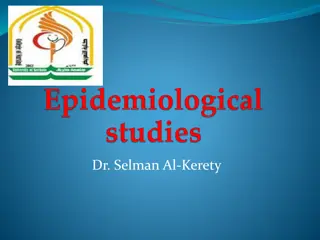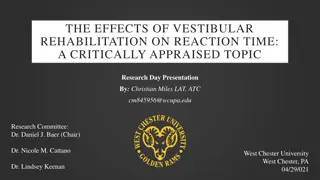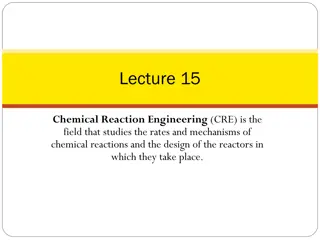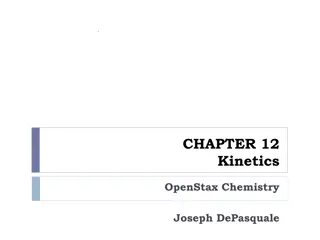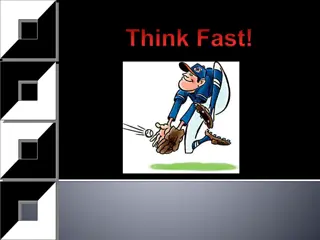Experimental Psychology on Attention and Reaction Time
The study of attention and reaction time in experimental psychology involves analyzing cognitive processes, focusing on how attention shifts between different cognitive tasks. The reaction time is crucial in understanding how individuals perceive and respond to stimuli, with various factors influencing the speed and accuracy of reactions. Researchers have developed systematic methods to investigate reaction times, such as Donders' cognitive task paradigm, to study the complexity of cognitive processes. These studies also examine the impact of different stimuli on reaction times, highlighting the intricate relationship between attention and response speed.
Download Presentation

Please find below an Image/Link to download the presentation.
The content on the website is provided AS IS for your information and personal use only. It may not be sold, licensed, or shared on other websites without obtaining consent from the author.If you encounter any issues during the download, it is possible that the publisher has removed the file from their server.
You are allowed to download the files provided on this website for personal or commercial use, subject to the condition that they are used lawfully. All files are the property of their respective owners.
The content on the website is provided AS IS for your information and personal use only. It may not be sold, licensed, or shared on other websites without obtaining consent from the author.
E N D
Presentation Transcript
Dikkat ve Tepki Sresi Deneysel Psikoloji
Dikkatin ki Yn B l nm dikkat Bir zaman diliminde iki bili sel g rev ile me gul olunurken bili sel kaynaklar n n bu g revlere e zamanl olarak payla t r lmas Se ici dikkat Bili sel kaynaklar n bir bili sel g revden di er bili sel g reve de i tirilmesi
Tepki Sresi Tepki astronomlar n n oldu ununbulunmas ylaba lad . s resine g sterilen tepki ilgi, on sekizinci sistematik y zy l farklar s relerinde Donders, karma y ntemini geli tirdi.
Donders A -- Basit A Tepki S resi C Tepki S resi C - A Temel D zey Uyar c y tespit etme/tan ma s resi Tepki se me s resi
Donders B -- Seme B Tepki S resi C Tepki S resi B - C Temel d zey Tepki se me s resi Uyar c y tan ma s resi
Tepki Sresi: Bamsz deikenler Uyar c say s Uyar c sunum h z G revin karma kl k d zeyi .
Tepki Sresi: Baml deikenler Tepki s resi Do ru yan t oran d Bit (bilgi miktar ) Bit/saniye d/saniye
Tepki Sresi: Baml Deikenler Ba ml de i kenler dikkatlice se ilmelidir. zenli bir ara t rmac ,davran a dair olabildi ince ok l m al r. Tepki s relerinin l ld deneylerde, hata oran da kaydedilmelidir. nk g rev h zl bir ekildetamamlad nda, hata say s artma e ilimindedir. Bu h z ve keskinlik aras nda bir takasa neden olur.
Kartrc Etki: Eklemeli Etki Ayr k de i tirilebilirlik (seperate modifiability): E er bir bile en di er bile enlere etki etmeden de i imlenebiliyorsa, ayr k de i tirilebilirlik s z konusudur. De i imlemeko ullar n n her biri i in ortak ba ml de i ken belirlenmelidir (Donders A, B, C g revlerinde tepki s resi l m gibi) Toplam tepki s resi, her ayr bile enin tepki s resinin toplam n i ermektedir. Buna eklemeli etki y ntemi denir.
Kartrc Etki: Etkisiz Eklenme Etkisiz eklenme (pure insertion): Zihinsel i lemlerin ayr k olarak de i tirilebilir oldu unda, yeni eklenen zihinsel s re bir nceki zihinsel s reci etkilemez. Donders deneyleri (tepki s resi l m ) eklemeli etkidir. Etkisiz eklenme i in tepki kuvveti l m ?
RT ve Birleik Kuvvet (Fig 8.3) Sonu lar etkisiz eklenmeyle tutarl d r.
B ve C reaksiyonlar B ve C de tepki s resi ve kuvvetinde bir fark yok
A ve C Reaksiyonlar RT farkl la yor ancak kuvvet de i miyor. Etkisiz eklenmeyle tutarl de il.
Kartrc Uyarcnn Younluu Kar t r c etki- ayn anda birden fazla ba ms z de i ken de i imlendi inde tepkideki farkl l n hangisinden kaynakland ndan emin olunamaz. Ulrich ve ark. n n deneyinde (sol veya sa da ye il LED), iki ey de i tirildi: ki uyar c dan yaln zca birine odaklanmay gerektiren bir deney tasarland . Parlakl k (iki k yerine tek k) I k yerine X ve S harfleri
Sorun: Negatif gei Denek i i desen Denekler aras desen
Baml deiken seimi: Hz Keskinlik Takas Tepki s resi tek ba na ba ml de i ken olarak kullan lmamal d r. nk denekler h z art rmak i in do ru say s n de i tirebilir (hatal tepkiler verebilir): H z ve keskinlik bazen birbiriyle ters ili kili olabilir. TS ve Keskinlik birlikte de erlendirilmelidir. Bir g revde birden fazla DV ninkullan lmas daha ge erli sonu lar elde edilmesine neden olabilir.
Theios (1973) Denekler g rsel olarak sunulan rakamlar s ylemesi gerekiyordu. Ba ms z de i ken e itli rakamlar n sunulma olas l klar yd (di er rakamlara g re ne kadar s kl kta sunuldu u). Say n n sunulma olas l 0.2 ile 0.8 aras nda de i mekteydi. Tepki s resi (TS), say n n sunum olas l ndan etkilenmemi ti ancak do ruluk b y k l de etkilenmi ti. Do rulu u (keskinli i) art rmak i in TS artmak zorundayd .
Uyarc olaslnn bir fonkisyonu olarak Hata Oran ve RT RT sabit Uyar c olas l artt k a hata azalmakta.
Hz Keskinlik Takas Psikolojik doygunluk d nemi Uyaran ba lang uyumsuzlu u SOA (S1-S2 Interval ms)
Uyaran Balang Uyumsuzluu (SOA: Stimulus Onset Asynchrony) Pashler S1 ve S2 nin e zamanl olarak sunulmad bir Donders B g revini kat l mc lara sundu. S1 ve S2 aras ndaki zaman aral uyaran ba lang uyumsuzlu u olarak adland r l r. K sa SOA tepki s resini uzat r ve hataya neden olur. Psikolojik doygunluk periyodu
U1 ve U2Arasndaki Balang Uyumsuzluuna Gre T2 Tepki Sresi ve Hata Y zdesi
Uyaran Balang Uyumsuzluuna li kin A klamalar Merkezi Kapasite Payla m Dar Bo az
